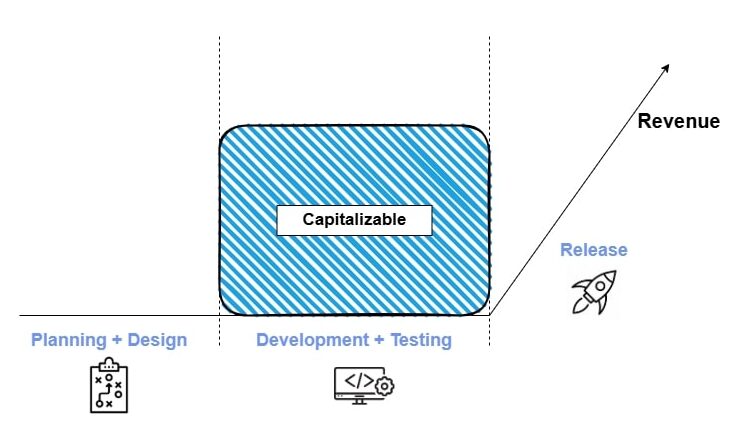Consider a business owner preparing to introduce a software-as-a-service (SaaS) offering. Imagine they spend $1 million USD to create the initial version of the software. This significant expenditure reflects a variety of expenses incurred during the R&D stage.
This is where software development capitalization comes into play. It is possible to capitalize certain qualifying costs, such as development initiatives after research, rather than recognizing the full $1 million as an initial expense. This indicates that rather than being listed as expenses in the profit and loss statement, these charges are listed as assets on the company’s balance sheet. Payment of these capitalized costs spreads the financial impact across the SaaS product’s useful life.

Challenges in the manual capitalization process
- Manual processes for software development capitalization frequently require a large amount of administrative work and have a high chance of human error.
- Teams must carefully monitor development expenses and differentiate between operations that are capitalizable and those that are not.
- The complexity of development projects, which involve numerous teams, tools, and geographical locations, makes handling capitalization by hand more difficult and ineffective.
How does automation fix these challenges?
Automation streamlines the software development cost capitalization process by eliminating manual inefficiencies and ensuring accuracy. Automated systems engage with financial software and development tools to accurately classify expenses, track spending, and produce reports that fit accounting rules. This boosts compliance and transparency while lowering the possibility of human error.
Automation ensures that the capitalization process grows smoothly with project growth by reducing the time spent on administrative overhead, freeing up teams to concentrate on strategic responsibilities.
Long-term benefits of automating software development capitalization
1. Improved accuracy in tracking and categorizing R&D costs
- Through direct integration with finance applications, project management platforms, and development tools, automation improves accuracy.
- It guarantees that all software R&D expenses, whether they are associated with maintenance, development, or research, are accurately and consistently recorded.
2. Consistent compliance with financial reporting standards
- Software development expenses must be clearly documented and categorized in accordance with financial reporting standards such as GAAP and IFRS.
- The danger of non-compliance is decreased by automating software R&D capitalization, which guarantees that these standards are applied consistently.
3. Improved scalability and adaptability
- Automation ensures that procedures are effective without adding overhead when teams or project scopes grow.
- Additionally, automated solutions are more capable of managing modifications to regulatory standards, enabling businesses to stay in compliance with the least amount of disturbance.
4. Impact on taxation
- Fast and precise software R&D cost tracking helps organizations avoid fines related to errors or misreporting.
- Also, automation helps firms take full advantage of existing tax benefits, maximizing credits and deductions for software development expenditures.
5. Facilitating strategic decision-making
- Automating software development cost capitalization facilitates strategic decision-making by providing actionable insights for resource allocation.
- Businesses can more effectively assess the return on investment (ROI) for R&D projects by accurately documenting and classifying costs.
- It guarantees that funds are allocated to programs with the greatest possible benefit.
6. Time-saving
- Automating software development capitalization saves time and effort for highly paid talents by decreasing their involvement in time-consuming manual tasks like cost tracking and reporting.
- They can allocate more of their time to high-value tasks rather than hours of administrative work.
Best practices
- Using tools and technologies: Use technologies that offer strong capabilities for tracking, classifying, and reporting software development costs, such as project management software and enterprise resource planning (ERP) systems.
- Integrating automation into existing workflows: Analyze current procedures and pinpoint areas where automation can be most beneficial to ensure a seamless transition.
- Conduct training sessions for teams: Teach your project management, finance, and accounting staff to run and maintain automation tools.
Conclusion
Software development capitalization automation is a strategic move that allows companies to focus on invention and simplify processes. A successful implementation depends on selecting the appropriate tools and encouraging cooperation between the teams. As companies grow and deal with changing regulatory environments, investing in automation not only improves efficiency but also puts them in a position for long-term growth in a market that is becoming more and more competitive.

